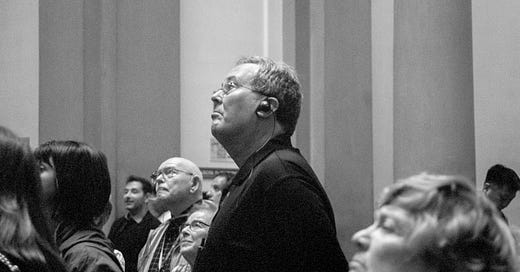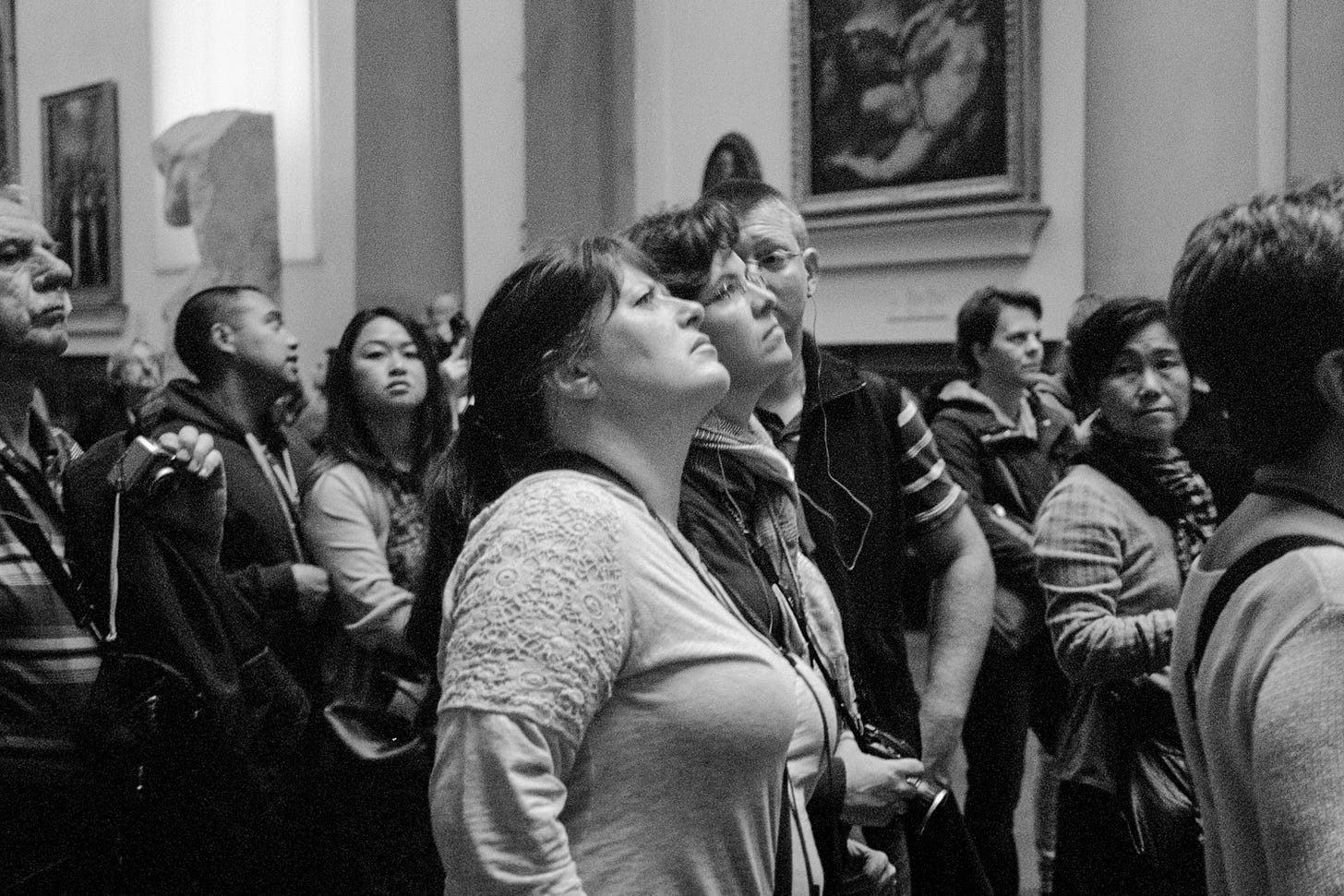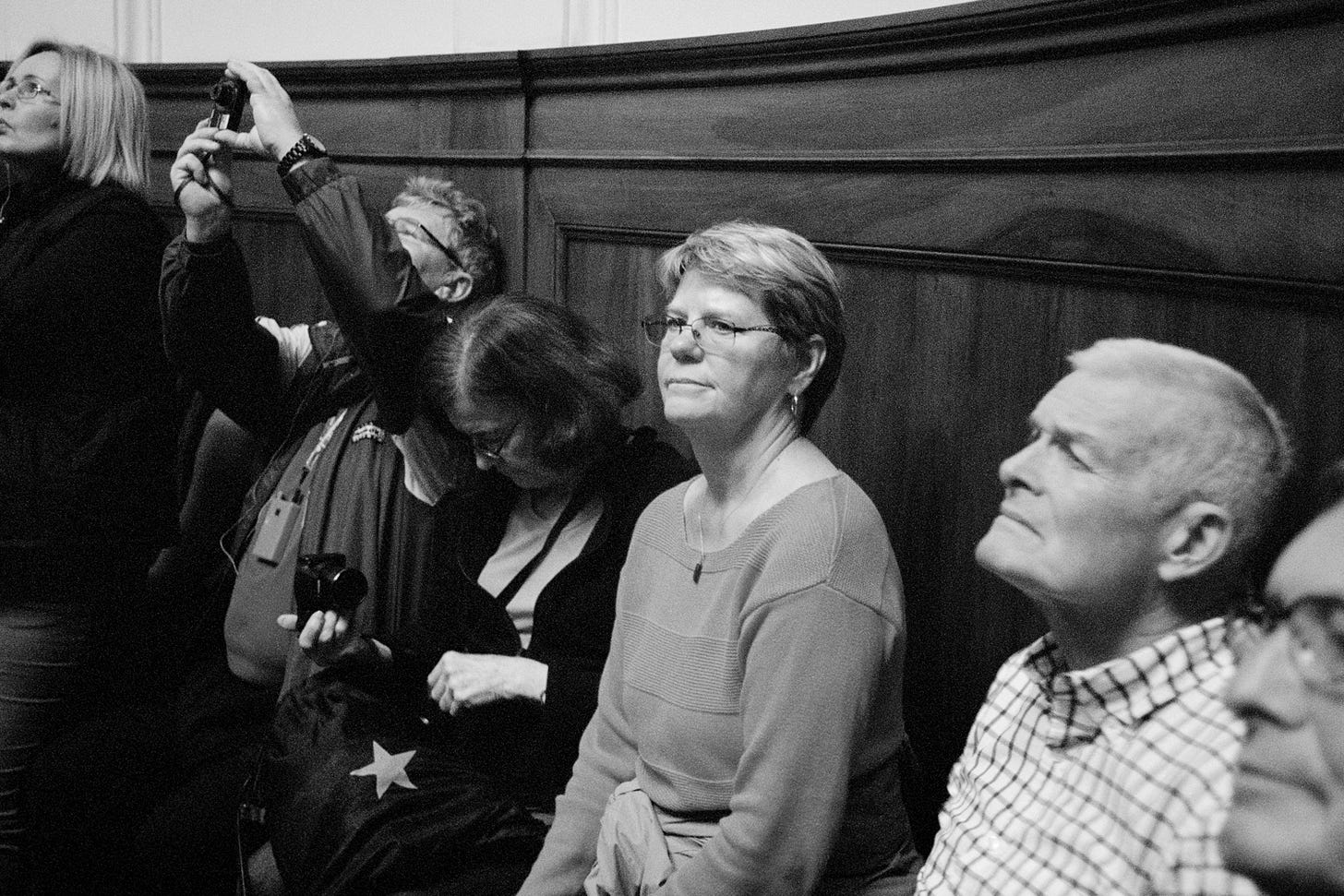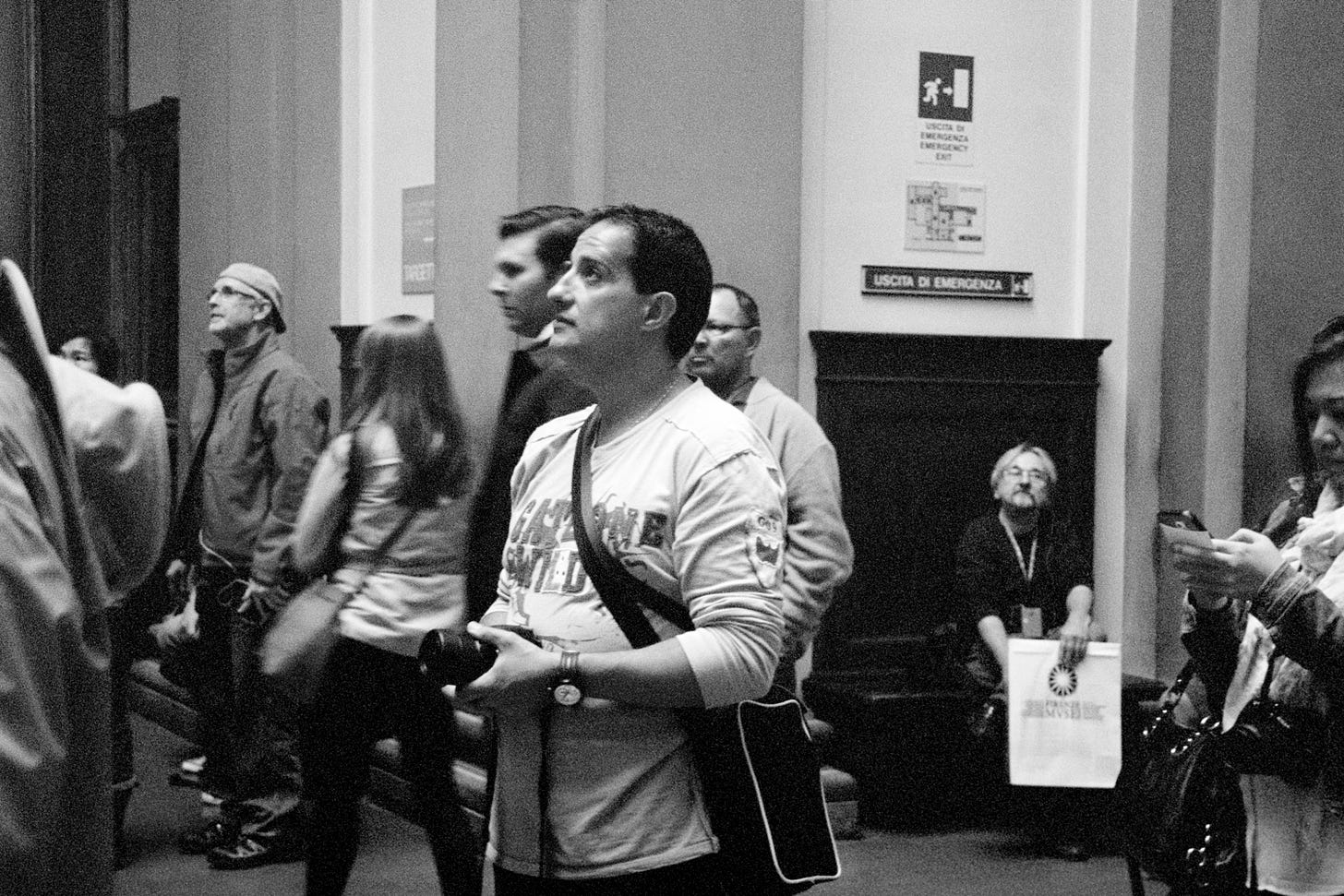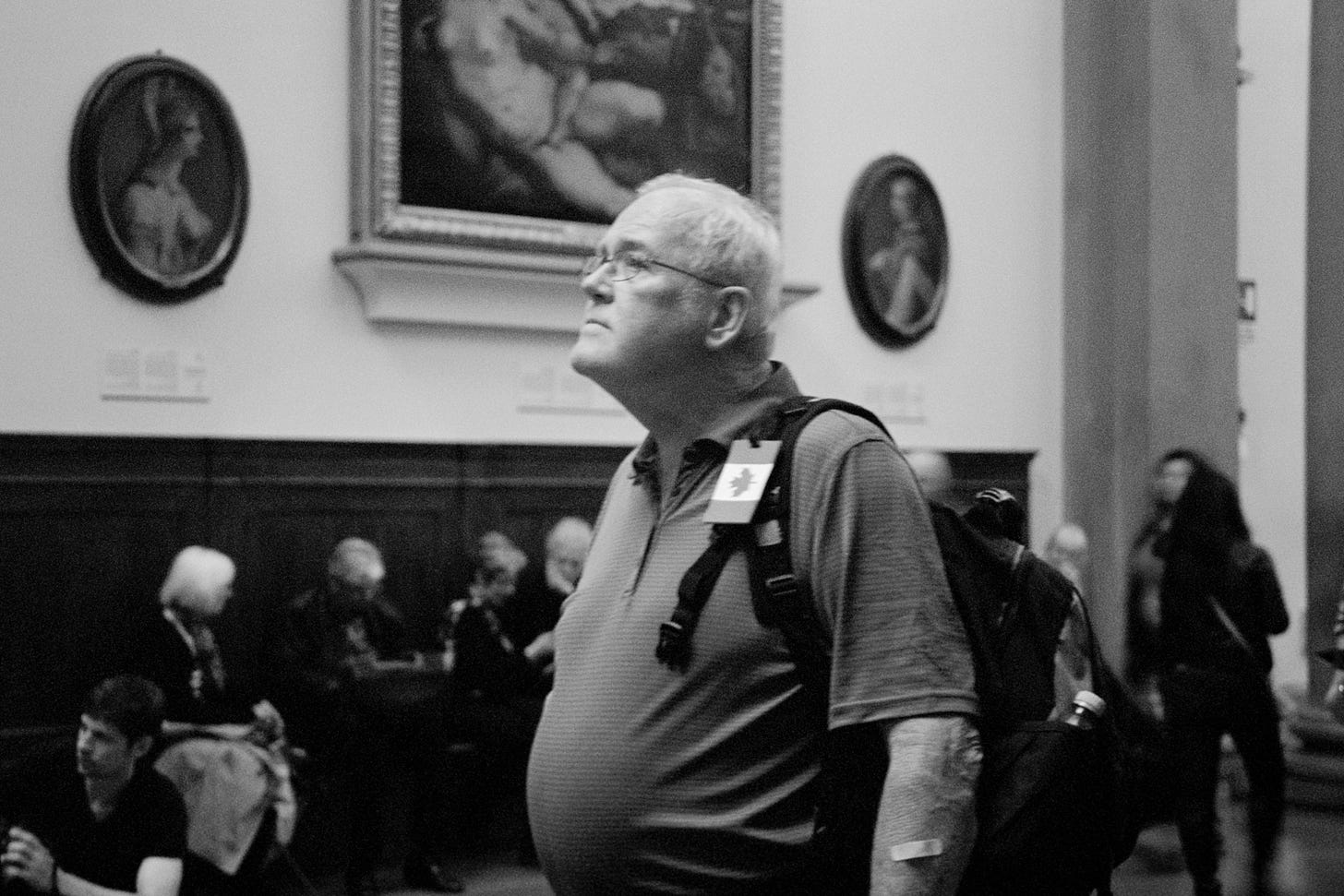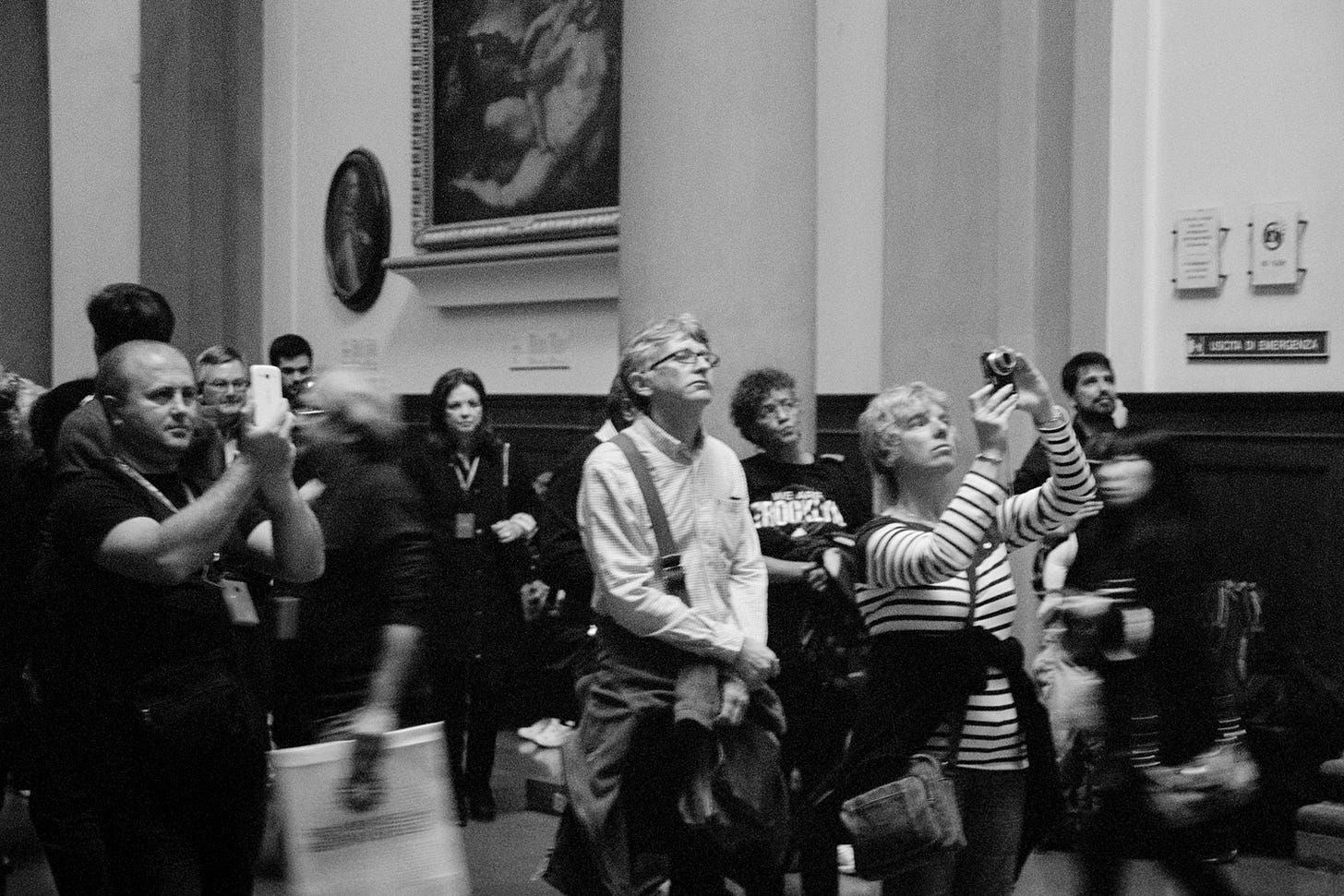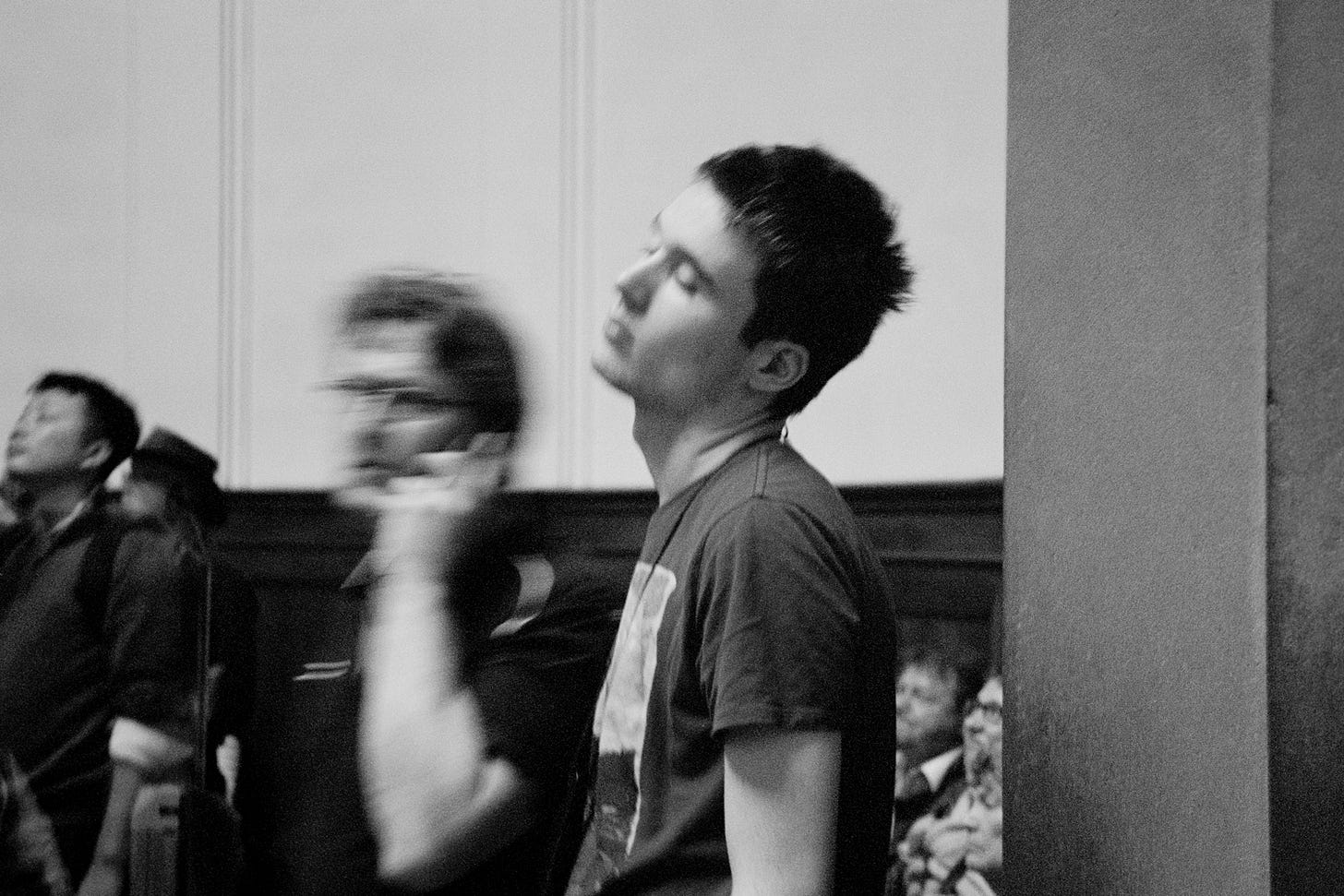My phone was stolen, or lost and then stolen, two weeks ago and I consequently spent six days without a device attached limb-like to me at all times. The unexpected loss (freedom?) came to a halt when Ana’s cousin generously offered to lend me his old Iphone and I succumbed to return my citizenship to the land of the smartphone, mainly I am useless without Google Maps.
I’ll resist the urge to make this newsletter an Op-Ed on the perils of smartphones in our collective culture (for more of that see literally any news platform anywhere!) or get too poetic on the ~radical~ experience of being ~offline~ and use the anecdote of my lost phone only as an entry point into something else.
Last weekend, three days into my newly (and temporary) phoneless lifestyle, Ana and I went to a Catherine Opie exhibit at MASP, one of my favorite São Paulo museums. The exhibit was incredible, not only for the pictures by Opie but for the concept of it’s installation. MASP was designed by Italian/Brazilian architect Lina Bo Bardi and she conceived the museum’s permanent exhibition to be installed sandwiched between glass panels grounded in concrete blocks. The result is that the work appears almost free-standing and allows for a 360 viewing experience. It also means that without the burden of having to be placed on a wall, the work is free from hierarchical constraint - you can weave around artworks, making your own path, building associations otherwise not possible when married to wall’s architecture.
The Bo Bardi installation is usually reserved just for the museum’s permanent collection, but the curators chose to employ the same tactic for Opie’s exhibit, and in keeping with Bo Bardi’s conceptual interest, paired Opie’s contemporary photographic portraits with classical portraits from the museums collection, including van Gogh, Rembrandt, and others.
The juxtaposition of Opie’s work of mostly queer and lesbian portraits, amongst the classical paintings by European masters was exactly my jam. The exhibit was a reckoning with history and representation, it was also a celebration of beautiful portraiture. The show reinforced my budding affection for Bo Bardi and Opie alike.
I’ve known of Catherine Opie’s work since undergrad but held a certain resistance to loving it for a long while. I think a portion of my apathy came from the familiar urge to refuse to overly like what is already well-liked by everyone else. Getting older is in part getting over this tendency and I’m grateful for that. May we all get closer to the freedom which is liking what we like, without the influence of who else joins us there.
Another reason I resisted Opie was that I only ever saw the same 3-4 pictures of hers over and over and I saw them a lot. In Art History textbooks, on Tumblr, in the L-Word theme song, etc etc. The truth is, her most famous pictures, including her self portrait with “pervert” carved on her skin, are rightfully her most famous pictures, and seeing them in person embarrassed my desire to occasionally dismiss them for their propagation. May we all get closer to the freedom which is liking what we like, regardless of how often we encounter it.
Being in the exhibition without a phone meant I couldn’t do the thing I most often do in an exhibition with a phone, which is photograph all the work I am most drawn to. I tell myself I do this for my own archive, which to be fair, IS true, I do dip into my phone pictures fairly often when preparing a new lecture for a class I’m teaching when I can’t easily find online the picture from an exhibit I want to share with my students. But in truth, I also do this because it’s my muscle memory. I’m not sure I even control the impulse to reach for my phone and quickly snap up or absorb every little thing I like at any little moment, whether it’s an artwork in a museum or a slice of orange on a plate which looks kind of cute in some light somewhere.
The problem, for me, with phone photography is that I’m insatiable and know no limits. The stakes are perhaps TOO low and often I worry that I am barely looking. Being in a museum, a place I want to really, absolutely be capital L looking, losing the limb of a phone in my pocket was an unexpected gift. Perhaps museums should be treated like a movie theater - you came here to see something without distraction, honor that desire.
Instead of a phone I resolved to bring a 35 mm camera with me and made 5-6 pictures of the exhibit as I meandered around it. I photographed the photographs, the installation, and the people looking. I haven’t seen the pictures yet but even unseen, I am in love with them. I have written so much about my love for the echo of film photography, the joy of a memory resurfaced, but with these pictures I am also thinking of the pleasure of looking at someone else looking.
In the Fall of 2015 I spent two weeks alone in Italy. While on a day trip to Florence, I did the obligatory task of viewing Michaelanglo’s David at the Accademia Gallery. I had been one time before during a study abroad program in college and felt slightly underwhelmed going again. I had another 35 mm with me then and after a few minutes absently staring upwards in a crowd of other people doing the same, I found my gaze more interested in looking at other people’s looking. At the time I was wondering how other people felt to be in the presence of a declared masterpiece, whether they too were underwhelmed or alternatively, experiencing the profound joy that only comes from looking at an artwork you absolutely love. How long was the right amount of time to look at something that if you’re entirely honest, you didn’t care about that much? How long was the right amount of time to look at something you loved?
I made a small handful of photos in the gallery of other people’s looking and have mostly sat on the pictures since. They are blurry with nervousness, but I’ve always had fondest towards them the same.
For today, in honor of a renewed interest in looking at looking, and while I wait patiently for my Opie exhibit pictures to echo back to me, those 2015 pictures below.
I also must mention Thomas Struth and his Museum Photographs series, which I love are often in the corners of my mind.
Other News:
I have three new online classes/workshops upcoming this Fall open to anyone and everyone. Information on each below:
I’m offering a 1 day workshop about Photography & Time TODAY- Sunday, September 8th. More details on this link
I am offering once again my 5-week class about the intersection of Walking & Photography titled Photography As A Pilgrimage, starting October 2nd. Details on this link.
I am teaching a 5-week Photography 3 course online through ICP, starting November 7th. Details on this link.
My zine titled “In This Light She’s Under” published by Matarile Ediciones is available to purchase online using this link.
